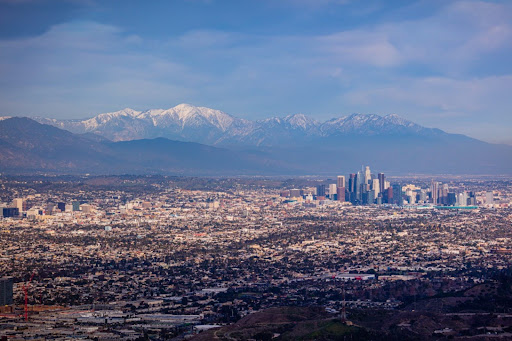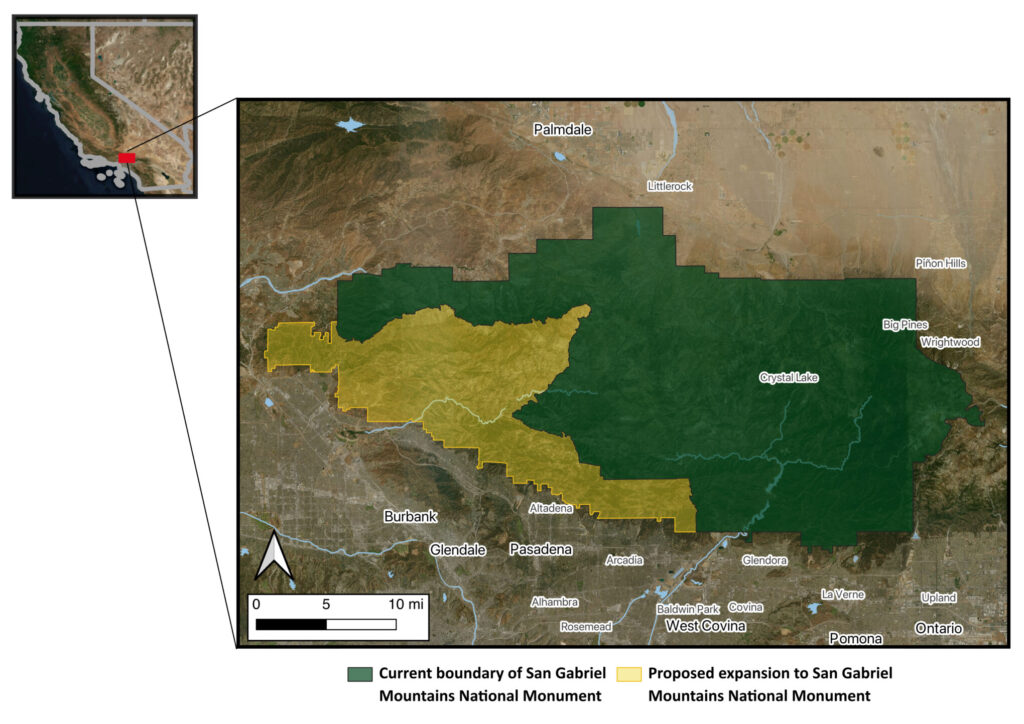
The Biden Administration has announced its approval of a 110,000-acre expansion of the existing San Gabriel Mountains National Monument in southern California as part of a string of recent actions aimed at conserving America’s natural heritage and improving access to nature. In a recent analysis commissioned by The Center for American Progress, we evaluated just how much this national monument expansion could result in expanding nature access – particularly for communities that have historically experienced disproportionate rates of nature deprivation.
The Obama administration established the national monument in October 2014 to provide protections for over 345,000 acres of the Angeles and San Bernardino National Forests. The mountainous terrain, despite being located within only 90 minutes of some 15 million people in the Los Angeles basin, boasts expansive natural resources including exemplary chaparral habitat, critical habitat areas for threatened and endangered species including the California condor and Nelson’s bighorn sheep, and nearly a third of the freshwater resources used by Los Angeles. It is also home to over 600 archeological sites chronicling human activities spanning over 8,000 years and supports an almost unparalleled degree of recreational opportunities for hunters, anglers, campers, and hikers in the region. At its original extent, the boundary of that national monument did not include the nearly 109,000 acres of the Angeles National Forest that most closely bordered the Los Angeles community. Over the last several years, many of our partners in the conservation community including The Center for American Progress have worked with local groups including the region’s Tribal communities to advocate for the monument’s expansion to bring these National Forest lands under the same level of protection to ensure continued access of the region’s residents.
Our analysis showed that the expansion of the San Gabriel Mountains National Monument would nearly double the number of people within 5 miles of the monument’s boundary – ensuring outdoor recreation opportunities for approximately 757,000 more people in the region. Non-white residents, who are more likely to experience nature deprivation, could significantly benefit from the monument’s expansion. Our analysis indicates that an additional 463,744 non-white residents from communities surrounding the national monument would be within 5 miles of the new boundary relative to the one established in 2014. Our analysis also determined that the driving time necessary to access the national monument could decline by an average of 18% for residents of census tracts within approximately 30 miles of the monument’s boundary. Census tracts classified as having high non-white populations, being low-income, and experiencing the highest rates of nature deprivation in California – communities that could benefit the most from increased access to nature – could see even greater decreases in driving time. Our analysis indicates that median drive times from these communities to access the national monument could decline by 38% from over an hour to around 37 minutes.
This national monument expansion demonstrates the possibilities for jointly addressing the need to conserve many of America’s most valuable natural landscapes and improve historically marginalized communities’ ability to enjoy them. You can read more about our analysis here. For more information on the national monument’s expansion and its ramifications, we encourage you to read this article from The Center for American Progress.


